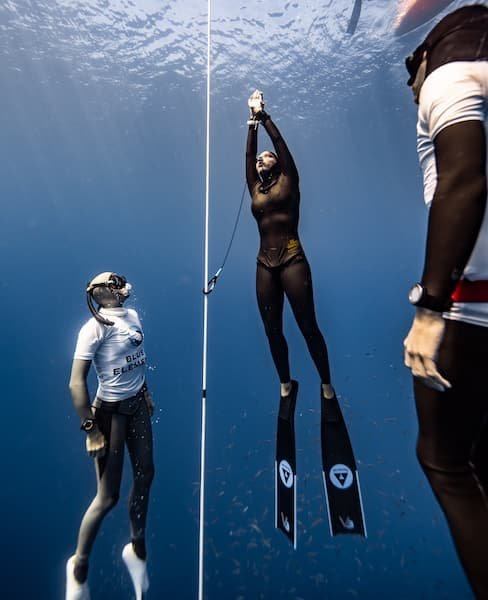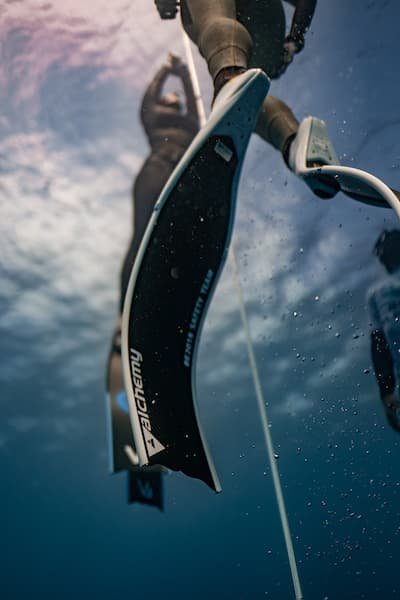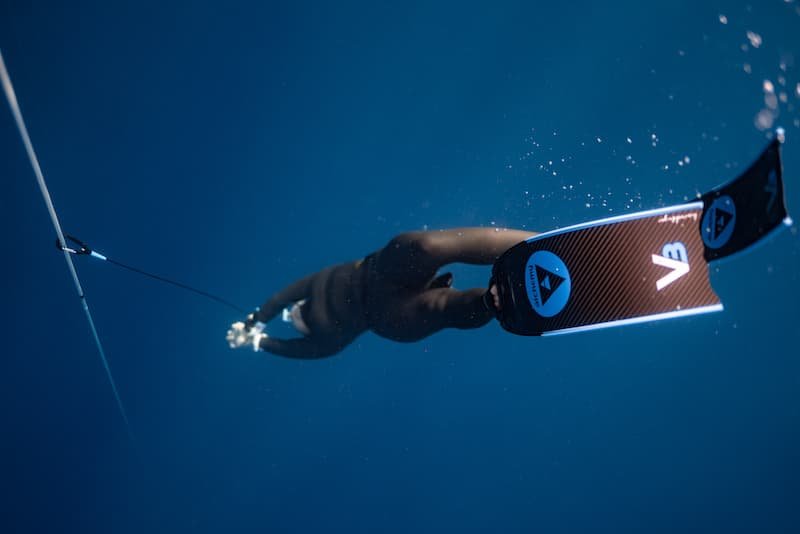Dive into the world of freediving safety with Lily Crespy, an AIDA instructor trainer, partner of Dahab Freedivers and Alchemy ambassador. In this insightful video, Lily shares essential techniques to ensure a safe freediving experience. From the importance of never diving alone to practical tips on equipment checks and defensive diving strategies, she provides valuable advice for both beginners and seasoned freedivers. Learn how to maintain a strong buddy system, recognize signs of trouble, and practice rescue skills to enhance your preparedness. Join us on this journey to promote safety and enjoy the wonders of the underwater world responsibly.
Undoubtedly, I'll emphasize it once more, as it's a crucial point that warrants frequent acknowledgment: the foremost and non-negotiable rule is to never engage in freediving alone. Despite our assurance in our own capabilities, complacency can set in, especially in certain situations, such as spearfishing with a friend. However, it's essential to understand that merely having a companion doesn't guarantee safe freediving. True companionship involves one person actively diving while the other is solely dedicated to vigilant observation and ensuring safety.
When spearfishing with two individuals, each armed with a speargun and both immersed in the activity simultaneously, there is no genuine buddy system in place. No one is keeping a watchful eye on the other, and the only safe approach would be for both to share a single speargun. In this scenario, one person descends while the other remains on the surface or descends solely for safety purposes. The same principle applies to recreational dives, whether exploring a reef or engaging in deep snorkeling. Always have one person at the surface and the other underwater.
The "never freedive alone" guideline is not restricted to deep or maximum attempts; it should be adhered to consistently. Adhering to this principle can significantly reduce the risk of accidents and tragic fatalities in the realm of freediving. Additionally, when emphasizing the importance of not freediving alone, it's crucial to clarify that the designated safety partner should not be a casual observer like a parent by the pool during a holiday static session. Rather, the safety companion must be someone trained in recognizing signs of distress and proficient in freediving rescue procedures, including the complete rescue protocol of blow, tap, talk, and knowledge of rescue breaths.

Certainly, there are fundamental safety measures to emphasize. Employ a lanyard, ensure the availability of oxygen, and enlist the support of at least one or two buddies, preferably safety divers who will rendezvous with you at depth. Common-sense precautions include utilizing sonar if possible, considering a scooter for deep safety, and implementing a counterbalance system. These are standard practices well-known within the diving community.

Undoubtedly, ensuring the safety of each dive rests squarely on your shoulders, and it's crucial to implement all possible measures for a secure experience. Another pivotal piece of advice is to consistently hone your skills through regular practice. Even though you may practice diligently, the actual moment of facing a real-life situation can induce a sense of unease, as your reactions may be unpredictable. Enhance your preparedness by routinely practicing your skills; this way, if an unforeseen incident occurs, your responses are more likely to be automatic, ingrained through repeated simulated rescues.
While the emotional impact remains undeniable, especially if the incident involves a close friend or buddy, regular practice contributes to automating your behaviors and reactions. It's akin to an "oh" moment when faced with a genuine scenario, yet having practiced extensively helps ensure that your responses are more instinctive. So, make it a practice to refine your rescue skills, engage in drills, and simulate rescue scenarios with friends — a highly effective method to maintain the freshness of your skills.

If you haven't witnessed a genuine blackout or loss of motor control (LMC) and are genuinely committed to delving deeper into safety, it's advisable to attend competitions or even participate in them. Unfortunately, these events offer a higher likelihood of encountering actual blackouts or LMCs. Alternatively, you can explore videos on platforms like YouTube. While it's not a topic typically emphasized with students to avoid causing unnecessary apprehension, watching videos depicting real-life instances of LMCs and blackouts can provide valuable insights into their appearance. By familiarizing yourself with these scenarios through videos, you'll be better prepared and less likely to be startled or freeze if you encounter such situations in real life.
The other thing I would say is very important is to check your equipment regularly. Make sure that your oxygen bottles are full, that you have all the equipment that you need in case of a real bad situation, that everything works, that you have an AED and you know where it is, and that it's all full with everything that you need for it and don't wait for the shit to happen because this is when you don't have time to look for things, and you don't have time to wonder "oh where is this missing part". In a real situation, you need to know where everything is so you can you know react fast and this is when every second counts. Don't wait for the actual accident to happen, just anticipate and make sure that all your equipment is up to date and you know where everything is located and nothing is missing.

Lastly, it's crucial to consider the unfortunate possibility of the worst-case scenario. Pondering what could go wrong allows you to be well-prepared, with comprehensive measures in place because you've envisioned and planned for such situations. While everyone hopes to never encounter these circumstances, being mentally ready ensures you're not caught off guard, and you know how to respond. Each individual's diving context varies, such as diving from a platform or boat, proximity to a hospital, and available resources. Tailor your preparations to your specific circumstances, contemplating potential scenarios and implementing measures to mitigate risks or prevent them entirely. In conclusion, these precautions constitute my advice for ensuring safety, and I wish you numerous enjoyable and secure dives.